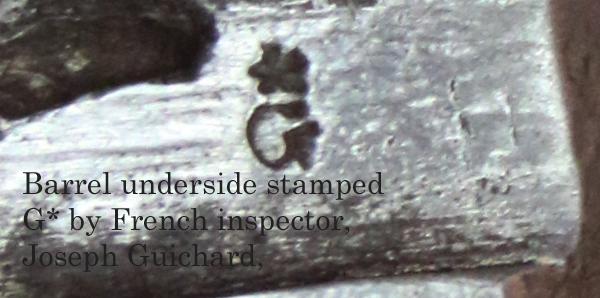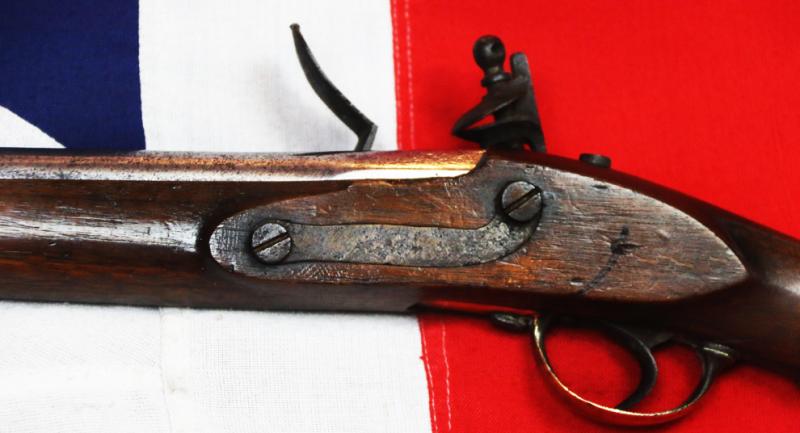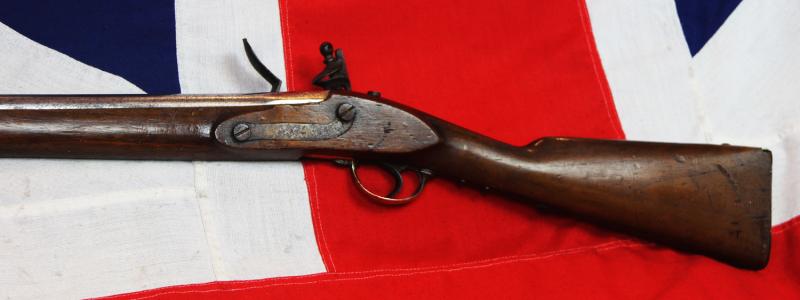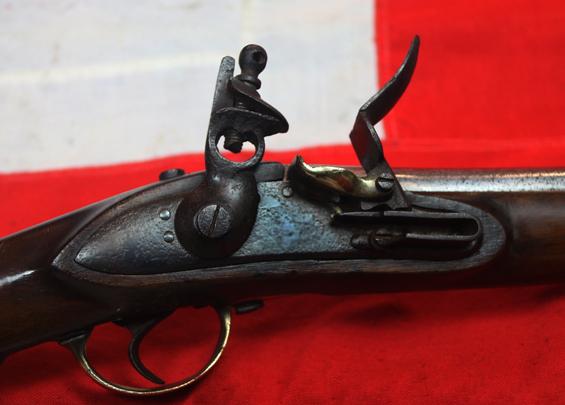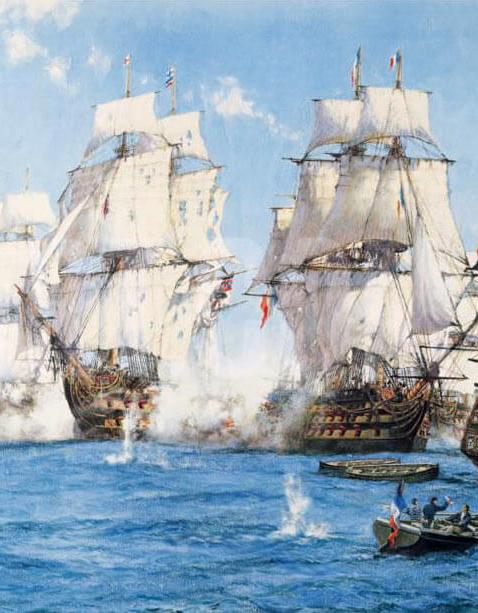Most Scarce French Marine Flintlock M.1786 / An.IX 1800's Carbine. A French Sea Service Carbine of the Napoleonic Ships of the Line. Battle of Trafalgar Service Period. Made Circa 1803-4 Inspected by Joseph Guichard Napoleonic Inpector of Arms St Etienne
A most scarce sea service gun, made by the French imperial arsenals in Belgium. The main difference between this and the standard French Army An IX {year 9} carbine is that the Navy carbine’s centre band was brass and the Army’s was iron, brass not rusting at sea. These carbines were usually issued to sharpshooters manning the upper platforms of French warships, and it might well have been a carbine of this pattern that was used to shoot Admiral Nelson.
This is a version of French M.1786 carbine musket, which was shorter and lighter than the earlier issued pattern.
After some slight modifications, the weapon was distributed to various ships of the line in the Navy, with two brass barrel bands, and to hussar/ cavalry units, the cavalry versions would be supplied with a large sling swivel bar fitted to the near side of the carbine, combined with one steel, and one brass barrel slide. Barrel underside stamped G* by French inspector, Joseph Guichard, his An IX inspector stamp M1786/ Marine garnitures, 1803-5. Guichard was usually based at St. Etienne.
Napoleonic Belgium 1799-1814
Liège was the home of the fourth largest arms manufacturer in Napoleons period known as the 1st Empire. Between 1798 and 1813, the Belgian departments furnished over 200,000 troops and sailors, about 6 percent of the population, for Napoleon's armed forces.
The Battle of Trafalgar, (October 21, 1805), was a naval engagement of the Napoleonic Wars, which established British naval supremacy for more than 100 years; it was fought west of Cape Trafalgar, Spain, between Cádiz and the Strait of Gibraltar. A fleet of 33 ships (18 French and 15 Spanish) under Admiral Pierre de Villeneuve fought a British fleet of 27 ships under Admiral Horatio Nelson.
Nelson was outnumbered, with 27 British ships of the line to 33 allied ships including the largest warship in either fleet, the Spanish Santísima Trinidad. To address this imbalance, Nelson sailed his fleet directly at the allied battle line's flank, hoping to break the line into pieces. Villeneuve had worried that Nelson might attempt this tactic but, for various reasons, had made no plans for this eventuality. The plan worked almost perfectly; Nelson's columns split the Franco-Spanish fleet in three, isolating the rear half from Villeneuve's flag aboard Bucentaure. The allied vanguard sailed off while it attempted to turn around, giving the British temporary superiority over the remainder of their fleet. In the ensuing fierce battle 20 allied ships were lost, while the British lost none.
Nelson's own HMS Victory led the front column and was almost knocked out of action. Nelson was shot by a French musketeer during the battle, and died shortly before it ended. Villeneuve was captured along with his flagship Bucentaure. He attended Nelson's funeral while a captive on parole in Britain. The senior Spanish fleet officer, Admiral Federico Gravina, escaped with the remnant of the Franco-Spanish fleet (a third of the original number of ships); he died five months later of wounds sustained during the battle.
The victory confirmed the naval supremacy Britain had established during the course of the eighteenth century, and was achieved in part through Nelson's departure from prevailing naval tactical orthodoxy.
Code: 25206
3450.00 GBP


